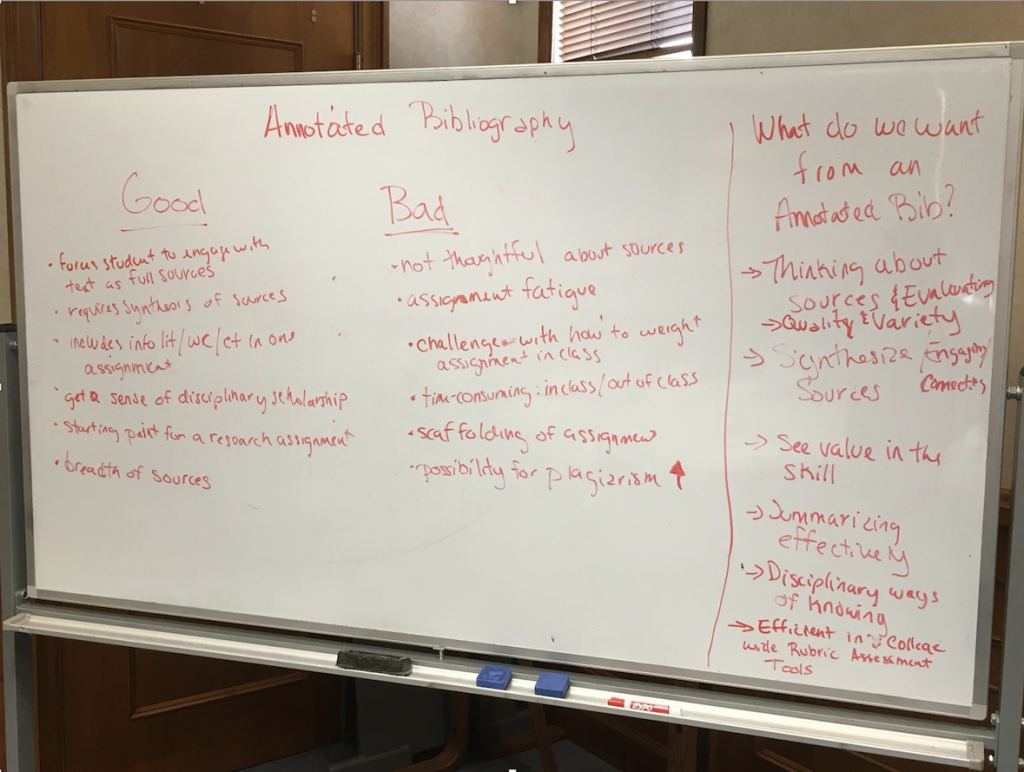by Susan Montgomery
During the spring 2020, I recruited colleagues to participate in a Signature Working Group funded by Rollins’s Mellon Grant for its general education program. Our goal was to devise an assignment that faculty could incorporate into their course as an alternative to the Annotated Bibliography. Members of this group were Amy Parziale, Anne Stone, Rachel Walton, Maridath Wilson, Layne Gordon, and me. For many of our colleagues, the Annotated Bibliography is the perfect assignment. It allows them to evaluate their students’ information literacy and writing skills without assigning a formal and often lengthy research paper. At Rollins, we assess these skills at the 100 and 300 levels in the rFLA program.
The appeal of the Annotated Bibliography has inspired faculty to include it regularly in their courses. Faculty in the SWG reported that the artifact submitted by students is often not ideal. There seems to be a tendency for students not to see the benefits of the Annotated Bibliography in their learning. In addition, the fondness for the Annotated Bib by multiple faculty colleagues may also contribute to student burnout when completing the assignment. In fact, I once heard a student say “another Annotated Bib?” when the librarian teaching the class discussed the assignment with the group. Thus, this Signature Working Group wanted to design an assignment that faculty could adopt as an alternative to the Annotated Bibliography.

The SWG met three times in person during the semester and completed substantial work in-between meetings. Because our goal was to create an alternative assignment, we first discussed the pros/cons and the goals of an Annotated Bib. To the right is an image of what we discussed.
From there we scoured the web to see what we could find as other assignments that we could modify or adopt to create useful alternatives as we moved toward creating our own. Each SWG member chose a site to research and tried to identify assignments for discussion. At our subsequent meeting, we discussed what we discovered from our web quest. We examined the assignments that would meet the goals of the Annotated Bibliography and discussed collaboratively any possible changes to enhance the assignment.
At our final meeting, we reviewed the top three possible assignments we thought our faculty colleagues could incorporate into their courses. We want the assignments to be flexible and allow the professor to modify them to meet the course goals. The three assignments are:
The SWG was a great opportunity to collaborate with colleagues on a project that could help faculty across campus. We worked toward the goal to reimagine the Annotated Bibliography assignment to create something new but still met the learning outcomes of the Annotated Bib. The optional assignments give faculty members the flexibility to modify them as they wish. One aspect of my job that I truly enjoy is working with faculty on rethinking assignments to help students meet the learning objectives of the course. I encourage faculty colleagues to contact me or another Olin Librarian to discuss an information literacy assignment that they would like to re-tool. Librarians are here to help!
